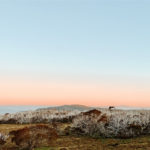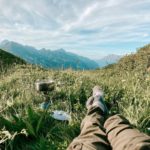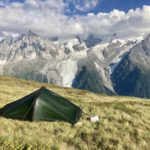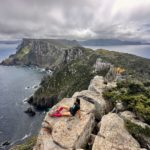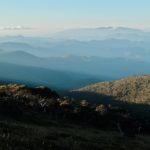Solo hiking
Everest Base Camp trek
(Travel Guide)
Solo hiking to Everest Base Camp Trek via the
Three Passes Route in 5 days.
No sherpa, no porter, no medication, no acclimatisation!
Just pure joy!!
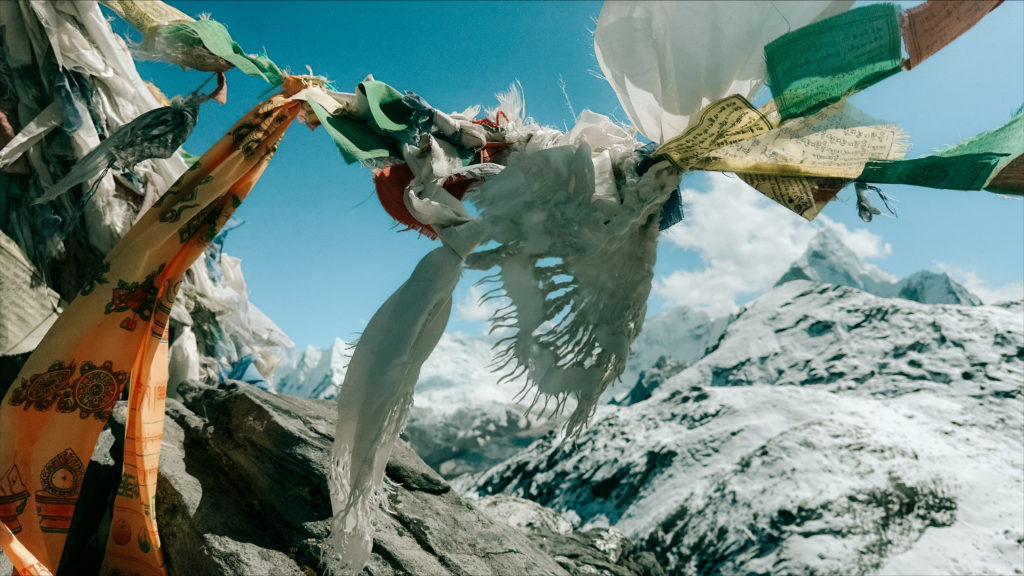
About Everest Base Camp Trek
There is no doubt about it, on the Everest Base Camp trail, I encountered some of the most stunning views of my life. The majesty of these mountains, the highest mountains in the world, are insurpassable. I can see why it is one of the most iconic trails in the world and why it is a must for your bucket list!
The Everest Base Camp Trek is a 135km out and back trail that takes you through the Sagarmatha National Park through to, you guessed it, Everest Base Camp sitting at an altitude of 5335 metres.
My experience of the Everest Base Camp Trek
Coming soon…
When to go and how long for
I travelled in October, which as it turned out was perfect. The days in Kathmandu were warm, bordering on hot, and up in the mountains I encountered clear, sunny skies for the majority of the trip.
I spent one night in Thamel, before taking a helicopter from Kathmandu to Lukla and hitting the trail with my full pack and walking sticks. My time was really limited (because I had left my son back in Australia), so instead of the recommended 12-14 days all up I took 8 – 5 up and 3 back down. Skipping all acclimatisation points – I don’t recommend this unless you are used to high altitudes. In saying that, I am not accustomed to high altitudes and lived to tell the tale 😉
At the end of the Everest Base Camp trek, I caught a light plane from Lukla to Kathmandu, had one more night in Thamel before making fast tracks back to Australia.
If you have more time- say three weeks, I highly recommend consideration to the Goyko Lakes or Three Pases routes. These are much longer loops and I would’ve LOVED these alternatives. As I was by myself, I took the liberty of taking a detour and did the first pass of the Three Passes to Kongma La at 5555 metres. This was THE highlight for me and the best moment of the trek.
Thamel is worth a couple of days of your time. The markets are a lot of fun to explore and it’s a great place to buy yak and cashmere blankets/ shawls. There are heaps of knock-off outdoorsy gear shops here too.
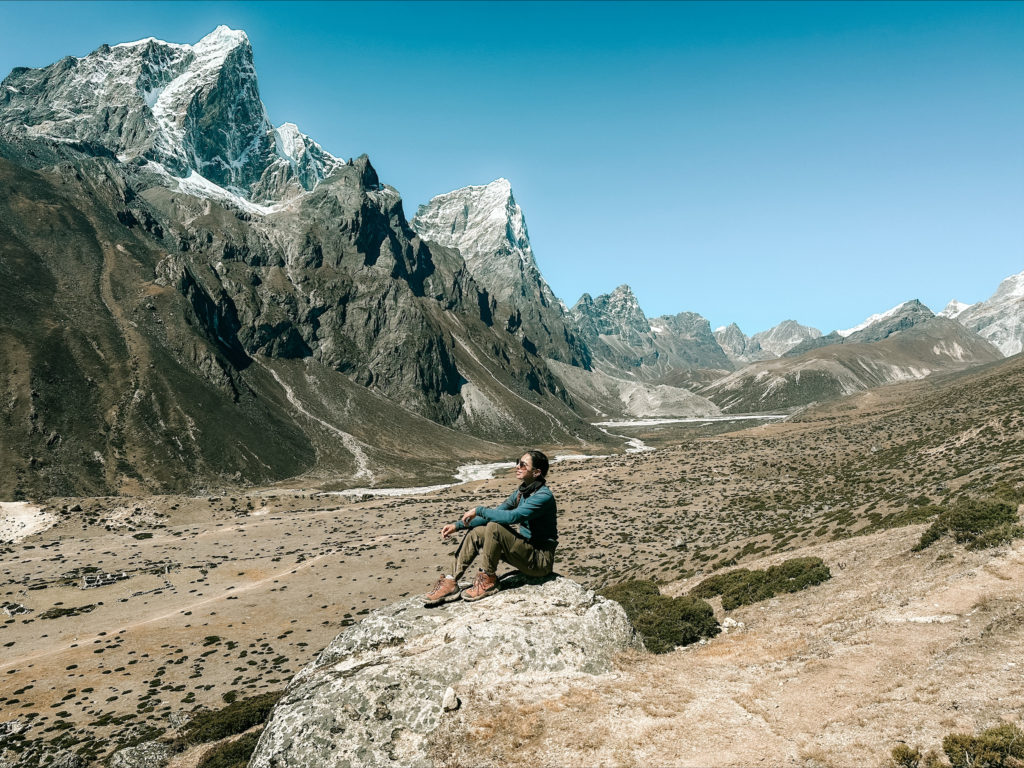
Do you need a tour?
Well, is all depends on the confidence you have in your own abilities, your willingness to surrender to the unknown, whether you want to carry your pack, your fitness and your familiarity with high altitudes.
If you’re happy with all that, just go alone. You’ll be fine. Navigation is a breeze as is finding places to stay. The trickiest bit is Kathmandu to Lulka by air and back again! Which is simply a pack your patience situation.
If you aren’t comfortable with all that, tours are most definitely one very viable option, as is hiring a guide and/or porter independently. I encountered both on the trail a lot, and only just a very few without any of the above.
Getting to/from Lukla from Kathmandu
Lukla has the reputation of being the most dangerous airport in the world, so getting there and back again is an adventure on its own!!
At the time of my trip in October 2023 there were no direct flights between Kathmandu and Lukla, as such the following options remained:
– helicopter between Kathmandu and Lukla
– 5 hour jeep ride to Ramechhap and fly from there (or vise versa)
– long jeep ride and extra hiking
I was able to get a last-minute spare seat on a helicopter out of Kathmandu which was an absolute God send and saved me a 1 am start on my first day. Great views and highly recommended!
For the return trip I took a flight with Sita Air from Lukla to Ramechhap and the shuttle bus/jeep into Kathmandu. A long and bumpy ride but interesting scenery along the way.
Delays are HIGHLY LIKELY with flights so you will need to pack your patience and be prepared to roll with the punches. And when I say delays, I don’t just mean a few hours. I met many people on the trail who had waited at Kathmandu 5 days because of inclement weather before they were able to get a flight over to Lukla, and others that had given up and instead taken the jeep and hiked extra days.
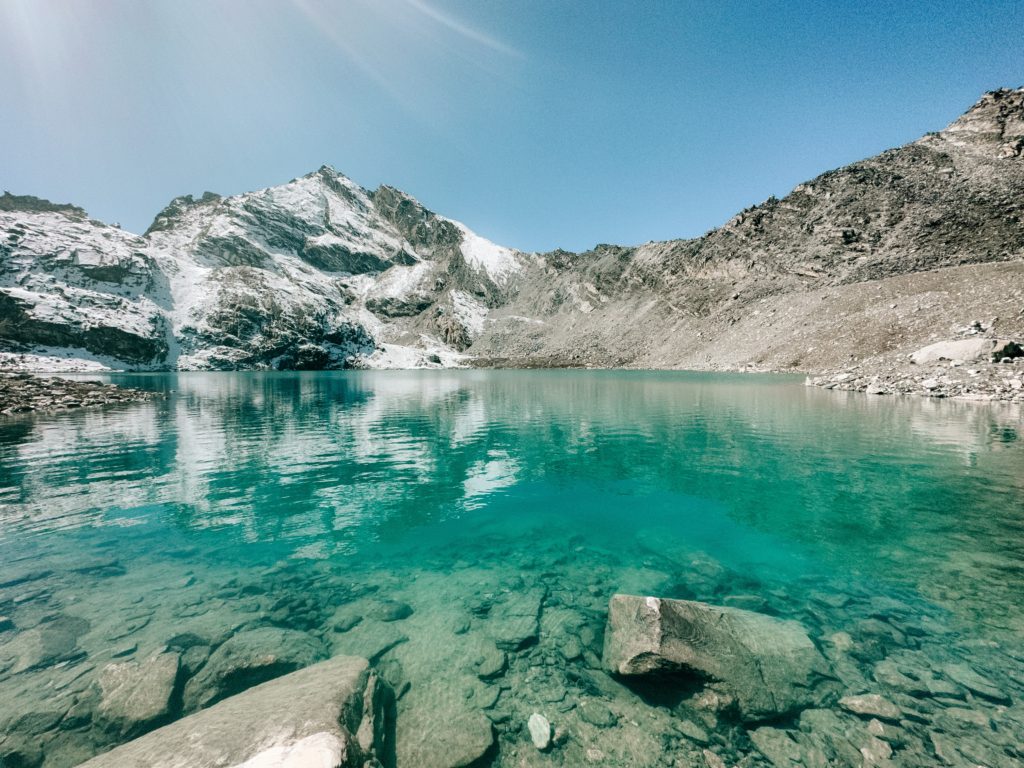
How hard is it?
There are a few factors to consider – your experience, your fitness, how much you are carrying and how fast you are ascending. I am very fit yet had a full pack and a fast ascent. I found the main trail hard in terms of the altitude affects but not challenging. The distances for each day were generally nothing crazy, up to around 15km. However, my detours up Kongma La and Nangkartshang were very challenging – mostly in terms of insanely steep terrain and the altitude affects accompanied by a full pack.
It is also worth noting there is a high failure rate on this trail, with only 65% making it to Everest Base Camp and back again. So, get training!!
The altitude is probably the most difficult element and as everyone reacts differently it can be a bit of an unknown quantity. Being fit, smashing garlic tablets and a lot of water was my strategy. You can get Diamox from pharmacies in Kathmandu quite cheaply if that is what you choose to do, however there are side effects which I wasn’t keen to get acquainted with. Read up on altitude sickness HERE.
I would rate this trail as CHALLENGING.
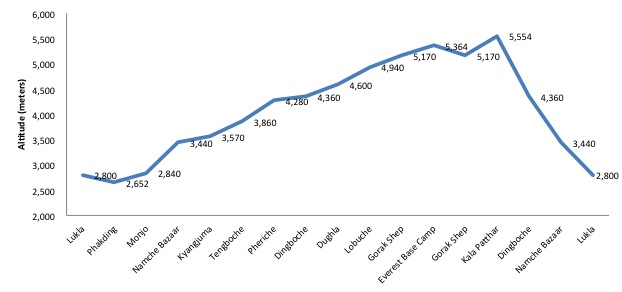
How cold is it
It is cold!! Up to Namche Bazaar it’s not too bad, but after that it really kicks in. I was layering everything I had for mornings and evenings by the time I reached Everest Base Camp! During the day a single layer was okay but I did encounter unseasonably beautiful sunny days.
During the night temperatures were around -15’C. Rooms are not heated so the higher I got I found myself wearing thermals and fleece, beanie and gloves, and even my down jacket inside my sleeping bag, with a blanket on top as well! In saying that I’m 48kg and don’t have a lot of my own insulation.
The dining rooms are heated with yak poo stoves so are a much nicer spot to spend an evening with a book, journal or chatting to other travelers.
Where to stay
In Kathmandu I stayed at the Kathmandu Peace Guest House, it was only AUD$21 per night for a private room with an ensuite bathroom and I experienced the most amazing customer service. They were happy to store luggage for me while I was on the trek, and I had a room upgrade to a balcony room upon my return. Rooms are clean and basic with windows that open (always so happy to be able to have fresh air), and the location was a short walk from the bustling streets of Thamel.
On the trail accommodation is by the way of Tea Houses, which are essentially private rooms with one or two beds, along a long hallway with a shared bathroom, attached to a communal dining hall. I always had a room to myself. The accommodation is VERY basic, a simple bed, blanket and pillow. No heating. Sometimes there was a PowerPoint but not always. Every village had plenty of Tea Houses so just pick one. Cost was usually around AUD$10/night.
To manage expectations, hot showers are rarely encountered and cost extra if you choose to indulge.
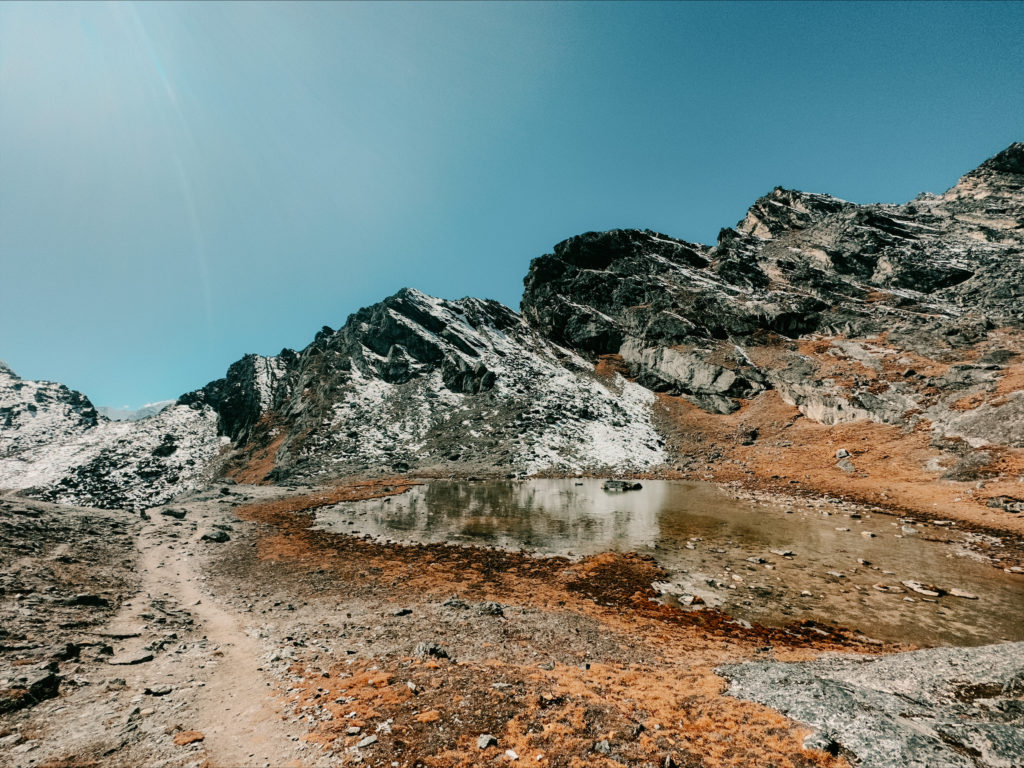
Food – gluten free and vegetarian options
The tea houses provide dine in food for breakfast, lunch and dinner. In terms of gluten free and vegetarian offerings, my breakfast was an omelet, lunch and dinner either friend rice (emphasize NO SOY SAUCE), baked potatoes and eggs or Nepalese curry with rice (free refills so if you’re super hungry this is a great option).
Ginger and honey tea I found to be a great accompaniment of an evening and a good way to get those fluids in. I often took the thermos to my room in the evening and found the tea to still be super hot in the morning. Now that is some thermos!!
There are lots of little stalls on the trail so you can buy chocolate bars, fruit and the snacks along the way. Snickers was a gluten free chocolate bar that was readily available the whole trail.
Water
From go to woe (except on the detours I did!) you can buy bottled water. The price gradually went up the higher the altitude.
Alternatively, and this is what I did, I filled up at taps along the way and added a water purification tablet. Much less waste this way! A life straw, filter or UV lamp would work just as well.
Navigation and safety
You could not lose this trail if you wanted to! It is a yak, donkey and people highway!! However, I did buy a map in Thamel (about AUD $3) which I found helpful to plot my way and spot my EPIC detours! And I had the trail downloaded on my phone with AllTrails PRO which works without data.
I felt very safe on this trail and found everyone I encountered friendly. For the Tea House rooms you are given a padlock so you can lock your belongings in, or yourself in.
Altitude sickness would be the one key safety issue. OH and also yaks. Get out of their way and don’t try to touch them.
I had no data on my phone and remained off grid for the entire time. Wifi was available at the Tea House in Namche Bazaar, however this was the exception and not the rule from my experience.
Packing Guide
Essentials only!! I have done a YouTube video on packing for the Tour du Mont Blanc so you can see my actual pack and gear if that is of interest.
I have a 48 + 10L pack and I left the 10L lid behind which was fine for a trip this length. I possible could have gotten away with a smaller pack also.
– sleeping bag (mine is -11 ‘C)
– silk liner (or at least a pillow slip for the pillows)
– down jacket
– Gortex, or a good rain jacket that fits OVER your down jacket. A wet down jacket is useless.
– thermals top and bottom, to sleep in and layer during the day if need be
– pants, tee, polar fleece
– beanie and gloves (or buy them there – plenty at Thamel and Namche)
– neck warmer that you can pull up over your mouth and nose (buy on the trail)
– wool socks
– underwear
– power bank, adapter, charging cords
– book, journal, pen
– toiletries
– water bottle & water purification tablets/LifeStraw
– travel towel and wash cloth
– hiking sticks
– hiking boots
– TOILET PAPER (there is NO toilet paper whatsoever on the trail, you need to take your own)
– hand sanitizer
– cash
Would love for you to follow me on Instagram and Facebook, and SUBSCRIBE at the bottom of the Homepage. I share a LOT more about this trip on Facebook.
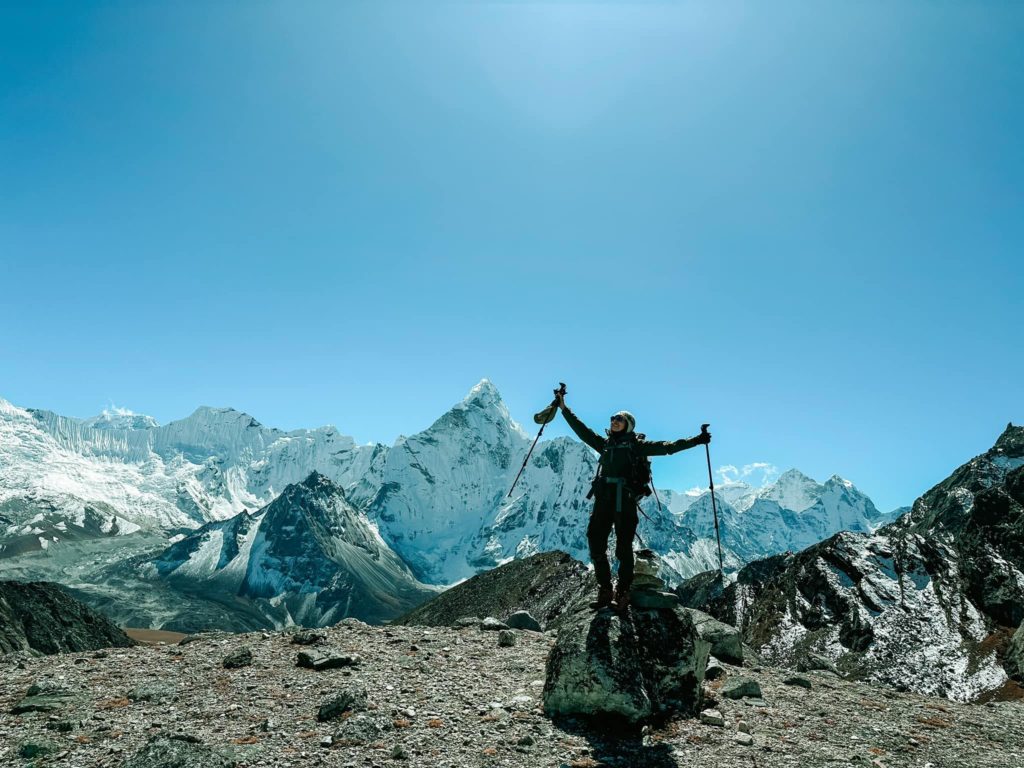
live a joyous and spectacular life.
~ Abram Hicks
